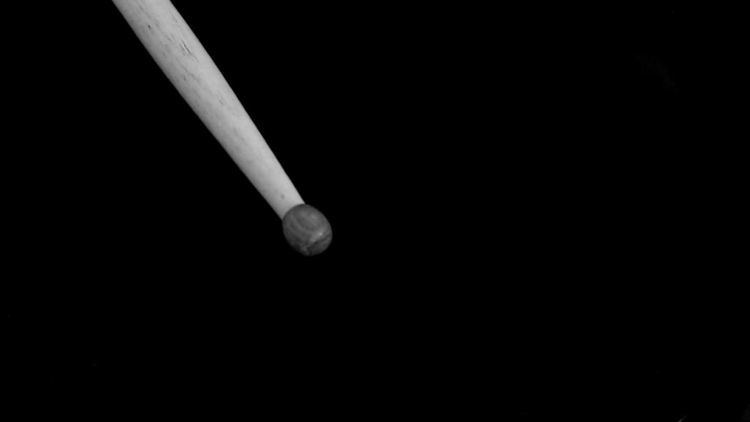 | ||
In percussion music, a rudiment is one of a number of relatively small patterns which form the foundation for more extended and complex drum patterns. The term "rudiment" in this context means not only "basic", but also fundamental. While any level of drumming may, in some sense, be broken down by analysis into a series of component rudiments, the term "drum rudiment" is most closely associated with various forms of field drumming, also known as rudimental drumming.
Contents
- History
- Terminology
- 40 PAS International Drum Rudiments
- Single stroke rudiments
- Double stroke open roll rudiments
- Thirteen essential rudiments
- Second thirteen rudiments
- Last fourteen rudiments
- Notable contributors
- Hybrid rudiments
- In popular culture
- References
Rudimental drumming has something of a flexible definition, even within drumming societies devoted to that form of drumming. For example, the longest running website on rudimental drumming defines it as "the study of coordination," whereas the Percussive Arts Society defines rudimental drumming as a particular method for learning the drums—beginning with rudiments, and gradually building up speed and complexity through practicing those rudiments. (An analogy might be made to learning the piano by first learning scales and arpeggios, as opposed to beginning by taking a full piece of music and grinding through it bit by bit, to the end.)
History
The origin of snare rudiments can be traced back to Swiss mercenaries armed with long polearms. The use of pikes in close formation required a great deal of coordination. The sound of the tabor was used to set the tempo and communicate commands with distinct drumming patterns. These drumming patterns became the basis of the snare drum rudiments.
The first written rudiment goes back to the year 1612 in Basel, Switzerland. The cradle of rudimental drumming is said to be France, where professional drummers became part of the King's honour guard in the 17th and 18th centuries. The craft was perfected during the reign of Napoleon I. Le Rigodon is one of the cornerstones of modern rudimental drumming.
There have been many attempts to formalize a standard list of snare drum rudiments. The National Association of Rudimental Drummers, an organization established to promote rudimental drumming, put forward a list of 13 essential rudiments, and later a second set of 13 to form the original 26. In 1984, the Percussive Arts Society reorganized the first 26 and added another 14 to form the current 40 International Drum Rudiments. Currently, the International Association of Traditional Drummers is working to once again promote the original 26 rudiments.
Today there are four main Rudimental Drumming cultures: Swiss Basler Trommeln, Scottish Pipe Drumming, American Ancient Drumming, and American Modern Drumming.
Terminology
40 P.A.S. International Drum Rudiments
Rudiments according to the Percussive Arts Society.
Single stroke rudiments
The single-stroke roll consists of alternating sticking (i.e., RLRL, etc.) of indeterminate speed and length.
Double stroke open roll rudiments
There are 10 official variants of the double-stroke roll.
Thirteen "essential" rudiments
- The Double Stroke Open Roll
- The Five Stroke Roll
- The Seven Stroke Roll
- The Flam
- The Flam Accent
- The Flam Paradiddle
- The Flamacue
- The Drag (Half Drag or Ruff)
- The Single Drag Tap
- The Double Drag Tap
- The Double Paradiddle
- The Single Ratamacue
- The Triple Ratamacue
Second thirteen rudiments
- The Single Stroke Roll
- The Nine Stroke Roll
- The Ten Stroke Roll
- The Eleven Stroke Roll
- The Thirteen Stroke Roll
- The Fifteen Stroke Roll
- The Flam Tap
- The Single Paradiddle
- The Drag Paradiddle No. 1
- The Drag Paradiddle No. 2
- The Flam Paradiddle-diddle
- The Lesson 25
- The Double Ratamacue
Last fourteen rudiments
More recently, the Percussive Arts Society added 14 more rudiments to extend the list to the current 40 International Drum Rudiments. Note that the ordering was completely changed during this last re-organization, so these numbers won't match those above.
Notable contributors
Hybrid rudiments
Over the years, many other rudimental patterns have been informally identified and given creative names, although most of these are based upon the original 40. They are commonly known as "hybrid rudiments" or "hybrids," and are especially common in drumlines and drum corps. A few notable examples are the Herta which is a drag played with alternating sticking (famous examples include the chorus fills by Dave Grohl in "No One Knows" by Queens Of The Stone Age, or the intro by Carter Beauford in "Drive In Drive Out" by The Dave Matthews Band), the Cheese, a diddle with a grace note, and the Eggbeater, a five-tuplet with the sticking "rrrll"; indeed, these hybrids have themselves given way to more innovative and arguably more difficult hybrids, "Cheese Invert" (an inverted flam tap with cheeses instead of flams) and the "Diddle-Egg-Five" (a paradiddle-diddle followed by an Eggbeater and two diddles, one on each hand). Other notable hybrid rudiments with interesting names include: "Book Reports", "Ninjas", and "Flam Dragons", formerly known as "Double Flam Drags". Check out the instructional video for "Flam Dragons" by creator Grant Caldwell at
In popular culture
A snare/cowbell paradiddle is featured on Skid Row's song "Monkey Business" (at the 2:55 mark). Aerosmith's "Walk this Way" features ride cymbal bell fills that are reminiscent of paradiddles. Buddy Holly's hit "Peggy Sue" features paradiddles all the way through. The dance in "Gangnam Style" is a paradiddle. The song "Vasoline" performed by drummer Eric Kretz of Stone Temple Pilots is another example of a song's drum groove that is strongly based from a single paradiddle. Paradiddles can and are often utilized in drum fills just as with drum grooves. An example of this can be found in Dire Strait's song "Sultans of Swing", around the three quarter mark of the song's completion. Pop singer Meghan Trainor makes reference to different rudiments in the lyrics to her song "Bang Dem Sticks" such as paradiddles, triplets and double strokes.
